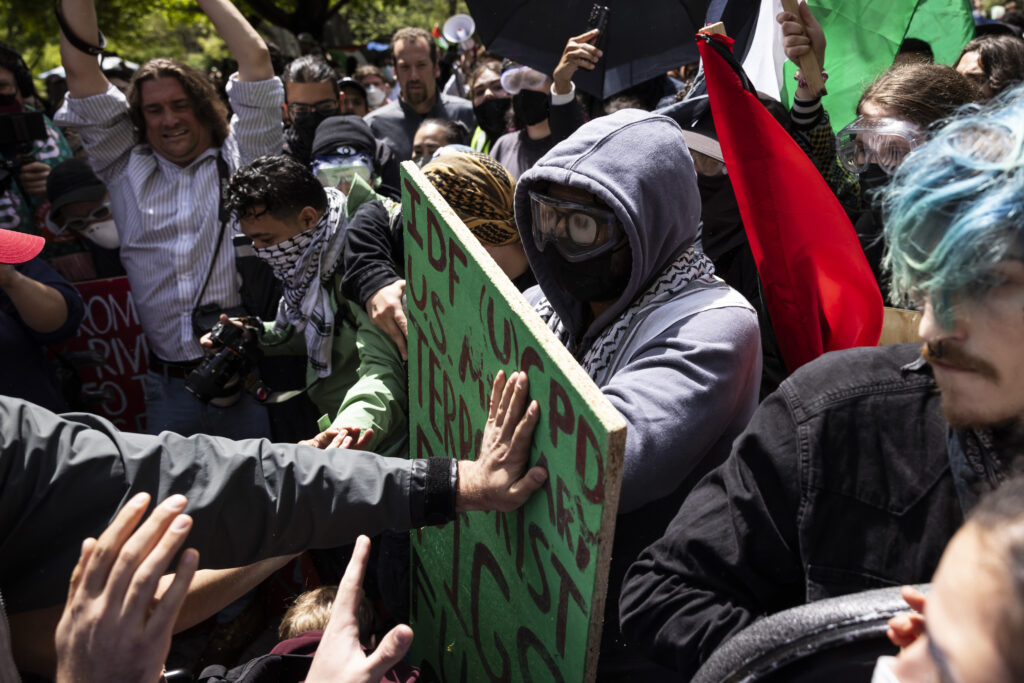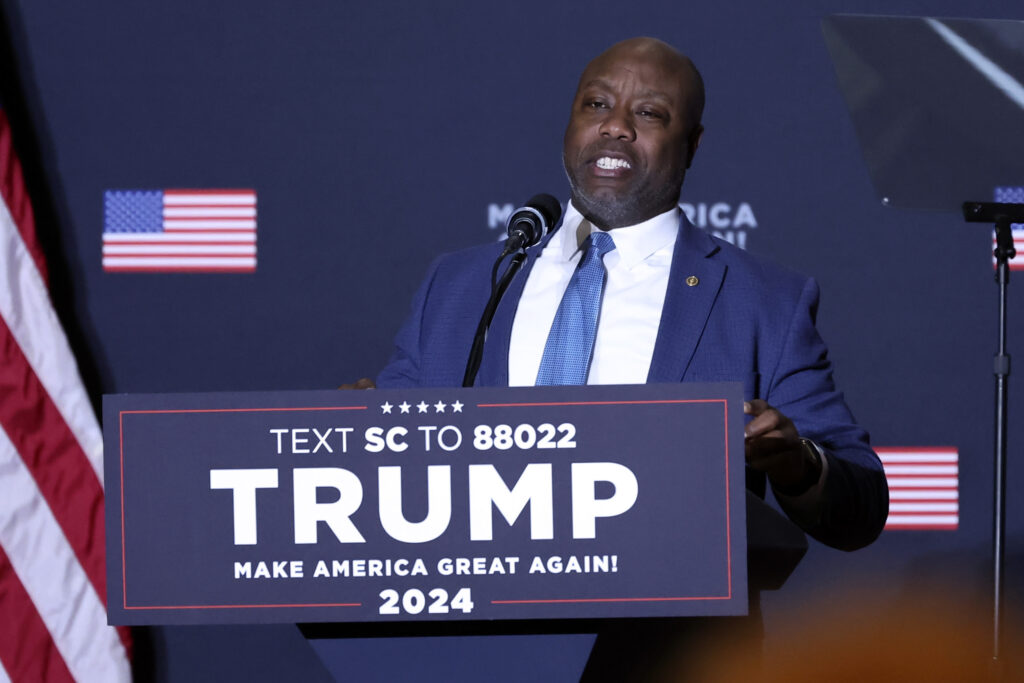What Biden’s Overhaul of the Federal Oil and Gas Leasing Program Means
The Biden administration announced on Good Friday that it will hold multiple oil and gas lease sales this summer, fueling a long-running battle between backers of fossil fuel energy and those who want to see an end to the decades-old federal leasing program.
Federal parcels in seven states will be opened for bidding in June, after which the awarded energy companies will then be eligible to apply for permits to explore and drill oil and gas on those lands — or not.
A JOURNEY THROUGH BIDEN’S RELUCTANT EMBRACE OF FOSSIL FUELS
Here’s how the leasing programs works:
Who’s in charge?
The Department of the Interior and its subagencies, the Bureau of Land Management and the Bureau of Offshore Energy Management, are the primary overseers of federal oil and gas leasing.
The department’s BLM oversees more than 700 million acres of land as part of the federal mineral estate, and the BOEM manages mineral leasing on the 1.7 billion acres of submerged lands of the outer continental shelf.
How are lease sales scheduled?
The BLM is required by law to hold onshore lease sales at least quarterly “where eligible lands are available,” while the Outer Continental Shelf Lands Act directs the BOEM to develop a program laying out scheduled sales covering a five-year period.
The current five-year program, for example, covers 2017-2022, expiring this year. It provides for three offshore lease sales in 2021, two in the Gulf of Mexico and one in Alaska’s Cook Inlet, and for one this year.
Under the current five-year plan, one offshore sale was scheduled for 2017 and two each for 2018-2020.
The Biden administration is currently mapping the next five-year plan but is behind schedule, having published neither a draft proposed program nor a draft environmental impact statement.
Where are leases held?
Companies hold leases all over the United States, but the lion’s share is concentrated in a few Western states, especially New Mexico, Wyoming, and Colorado.
The total number of onshore leases in effect in fiscal year 2021 was 35,871, with 23,803 producing,
The number of active leases in the Gulf of Mexico was 2,018, covering 10,773,137 acres, as of December 2021. Of those, 540 leases covering 2,766,936 acres were producing.
What do taxpayers get out of it?
The federal government earns revenue from the leasing programs, primarily in the way of royalties on oil and gas that gets drilled and rents paid on lands until production begins.
A minimum royalty rate of 12.5% for oil and gas produced on public lands was established by the Mineral Leasing Act, while rates for offshore leases can range between 12.5% to 18.75%.
The BLM generated nearly $4 billion in federal royalties, rental payments, and bonus bids in fiscal year 2018, and federal offshore oil and gas revenues totaled $4.1 billion in fiscal year 2021, according to the Congressional Research Service.
States also collect revenue generated on federal onshore oil and natural gas leases held within their borders.
In New Mexico, federal disbursements from oil and natural gas leases made up 10.95% of the state’s budget for the year period July 2019 to June 2020. For Wyoming, that number was 7.78%, although it was less than 1% for the other states with leases in their jurisdiction.
Are lessees required to drill oil and gas?
Companies that lease federal lands are bound to the royalty rates, rents, and the term limit, typically 10 years, of a given lease, but they are not required by law to produce oil and gas.
“Federal leases provide operators with an option, rather than an obligation, to drill and produce,” explained Kevin Book, managing director of ClearView Energy Partners. “Operators typically value those options based on the expected net present value of producing the resources being leased.”
What’s the difference between leases and permits?
Some lawmakers and other officials have conflated leases and drilling permits in public comments about energy policy in recent months.
Companies are required to apply for additional permitting to explore and then drill on the lands they lease.
The total volume of “approved and available to drill” permits varies by month but has remained in the range of 9,000 and above over the past 10 months.
New permit approvals have also varied widely each month during President Joe Biden’s tenure. The BLM approved 643 applications for permits to drill on non-Native American federal land in April 2021, another 277 in July 2021, and 97 in January.
The number has ticked back up: 446 applications were approved in March.
How much oil and gas come from federal lands?
An overwhelming majority of the oil and gas produced in the U.S. is extracted on private lands rather than federal.
In 2019, crude oil produced from federal lands accounted for just 6.1% of total U.S. production that year, while 9.6% of total natural gas production came from onshore federal lands, according to the CRS.
Offshore oil and gas production averaged 1.73 million barrels of oil equivalent during December 2021. Total U.S. production of crude oil alone that month averaged around 11.6 million barrels per day.
CLICK HERE TO READ MORE FROM THE WASHINGTON EXAMINER
What has Biden done?
Biden said on multiple occasions during his campaign for president that he sought to end the leasing of federal lands and waters for fossil fuel production, and one of his first executive actions ordered the Interior Department to pause and review the leasing program. Production on existing leases was not affected by the order.
The pause was effective until a federal court in Louisiana enjoined the order in June 2021. The administration subsequently filed an appeal in August.
Although the Interior Department said it would comply with the injunction, the Justice Department argued in its appeal that federal law gives the former “considerable discretion” to delay or cancel leasing and, in its brief, noted that “the nine [offshore] five-year programs that have been approved … have resulted in fewer lease sales than were originally scheduled.”
Citing compliance with the injunction, the administration later in August issued a record of decision for Lease Sale 257, one of the two 2021 Gulf of Mexico sales called for under the five-year plan, and the sale was held on Nov. 17, 2021.
After Thanksgiving, the Interior Department released its report pursuant to Biden’s executive order, and it recommended multiple changes to the leasing program, including higher royalty rates to better compensate taxpayers. It also discourages offerings of “low-potential” lands for leasing.
A federal judge threw out the lease sale in January and remanded it to the agency after environmental groups sued. Judge Rudolph Contreras ruled that BOEM’s reviews failed to estimate adequately the impact on the environment that the sale would entail.
The Biden administration since announced it will offer roughly 144,000 acres across multiple sales beginning in June. The Interior Department will charge the recommended 18.75% royalty rate on the acreage, which covers Colorado, Montana, Nevada, New Mexico, North Dakota, Utah, and Wyoming.
" Conservative News Daily does not always share or support the views and opinions expressed here; they are just those of the writer."





